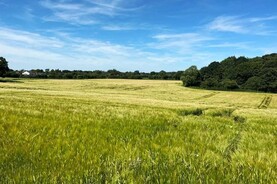While there was little rain forecast for the week ahead, many areas got some decent showers or heavy drizzles on Thursday, with more to follow after the weekend.
All the while, temperatures have stayed high enough to keep soils warm and grass pushed on.
The rain over the past month does seem to be falling very locally.
Nearly all farms had been running tight in the middle of the month owing to regrowths being so poor - anything that had a cover of grass on it grew OK, but anything that was grazed or cut was taking 10 days to two weeks longer to come back into the rotation in some cases.
A lot of farmers that I spoke to this week had been in this position, but with first cut ground coming back into play and the combination of heat and moisture, they are in a much better position now.
Saying that, these farmers need to be mindful of pulling supplementation too quickly.
Average growth is still probably 20kg to 30kg DM/ha behind for a lot of farms and even if growth is ahead of demand right now, average farm cover needs to be brought back up to ensure against a possible dip in growth again.
A cover of 170kg to 200kg DM/LU is optimal, with pre-grazing yields of 1,300kg to 1,400kg DM/ha.
Danger zone
Farms that are really in the danger zone are those that are part of the 26% that recorded average covers of less than 150kg DM/LU.
Heavy supplementation for a week may be the best way to try to increase growth and raise farm cover, as when we see covers below 500kg DM/ha, growth can be slow to increase due to the low amount of leaf matter photosynthesising sunlight into energy and, ultimately, growth.
An option might be to house half of the herd during the day when the other half are in at night to try to give the grazing block a chance to green up once again.
This sharp dropping of the stocking rate might be a quicker and more surefire way of getting growth and covers back in line as opposed to waiting for cover to gradually increase by supplementing with just ration or a small amount of silage at milking time.






 This is a subscriber-only article
This is a subscriber-only article










SHARING OPTIONS: